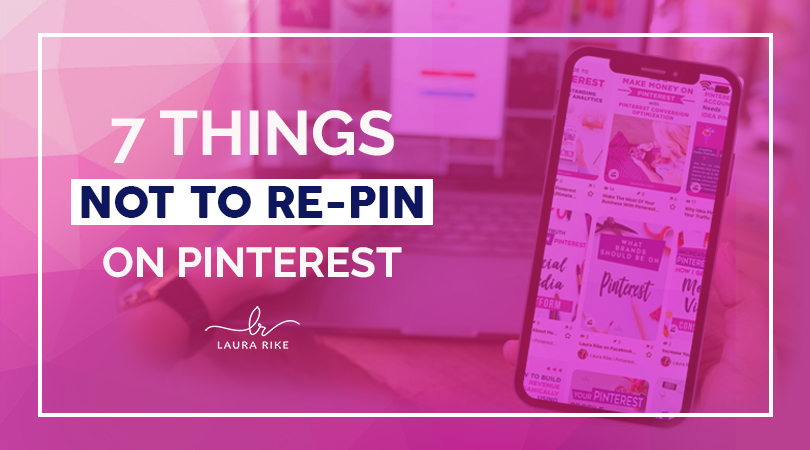DISCLOSURE: This post may contain affiliate links, meaning I get a commission if you decide to make a purchase through my links, at no cost to you. Please read my disclosure for more info.
Repinning posts on Pinterest is an effective way to stay active and engaged on the Pinterest platform without spending time creating content. A repin is a Pinterest post that is saved to one (or more) of your Pinterest boards, containing the image, title, and link to an external original source.
There’s a useful strategy behind repinning, but it involves restraint when deciding what to repin. Let’s explore the benefits of repinning and which posts to steer clear from posting.
Table of Contents
Strategy Behind Repinning
A professional Pinterest coach will encourage fresh Pins for an effective Pinterest marketing strategy, but repinning relevant content offers many benefits. For example:
- Offer followers interesting or useful information to build authority in your niche
- Catch the attention of the original Pinterest profile that posted the Pin content
- Encourage a symbiotic relationship with the original source, exposing your content to their audience
When choosing what to repin, consider whether your followers will find use or value in the content. Ask yourself whether it is likely that your followers will repin the Pin. Also, is the original source a potential collaborator?

What NOT to Repin
The ultimate goal of repinning content is to widen audience reach and assert your big or small business as an authority. However, there are a few things that should not be re-pinned.
Pins With the Incorrect Format
The recommended Pinterest format is vertical, measuring a 2:3 aspect ratio. Following this format ensures that the Pin appears correctly in the Pinterest feed. Pins designed in a different format, such as a square 1:1 aspect ratio, will negatively impact performance.
Avoid disrupting the aesthetic of your followers’ Pinterest feeds or hindering your performance by repinning posts that strictly follow a 2:3 aspect ratio.
Pins with a Broken or Incorrect Link
A Pin’s link intends to drive traffic to an external website where followers can find additional information on the Pin’s topic. If the link is broken, then it will interfere with the followers’ user experience, causing frustration and negatively impacting the brand. An incorrect link has the same negative effect.
For example, if a user follows a link for a pumpkin recipe, then the navigation should lead to a reputable source and not a 404 error or random gambling website.
Pins from External Niche Topics
Whenever repinning content, it should add to your brand’s authority in the niche. If you repin content from another niche, then it will dilute your command within a specific niche and confuse users about your expertise.
For example, if you are a travel blogger, then you should stick to repinning content on travel hacks, destinations, and inspiration posts. You should not repin content on DIY hacks or recipes.
Pin Spam
Spammers take advantage of Pinterest to trick people into sharing spam content without identifying the true nature of the content. If a user clicks on the Pin, they may be directed to a spam website which adds to a negative user experience.
Before repinning a post, make sure that the link goes to a reputable website and that the Pin offers quality value to your audience.
Stolen Images
Copyright is a major concern on Pinterest, and users must take care that no copyrighted images are shared without permission.
There’s a low chance that you’d report a stolen image once you’ve shared it, so it’s important to assess for any copyright infringements before re-pinning the post.
Affiliate Link Pins Without Disclosure
Adding an affiliate link to a Pin is an effective way to earn an income, yet the Federal Trade Commission (FTC) demands that all affiliate links are disclaimed in advance.
Any Pin that you share should disclose any affiliate link that is included in the post. Failure to disclose an affiliate link could land your business in legal and financial trouble.
Interested in incorporating your own affiliate strategy? Find out more about a Pinterest affiliate marketing strategy for success!
Duplicate Pins
Pinterest prioritizes fresh Pins which have never been seen before. A duplicate Pin is the opposite of a fresh Pin, using the same image and URL combination that has previously been posted. Make sure that you avoid creating duplicate Pins, as it will harm your brand’s performance.
Are you looking for extra guidance with your Pinterest profile? Perhaps a confidence boost to produce the best Pinterest marketing strategy? Explore our Pinterest Rockstars course, which strives to bring more traffic and leads to your website using the power of Pinterest.